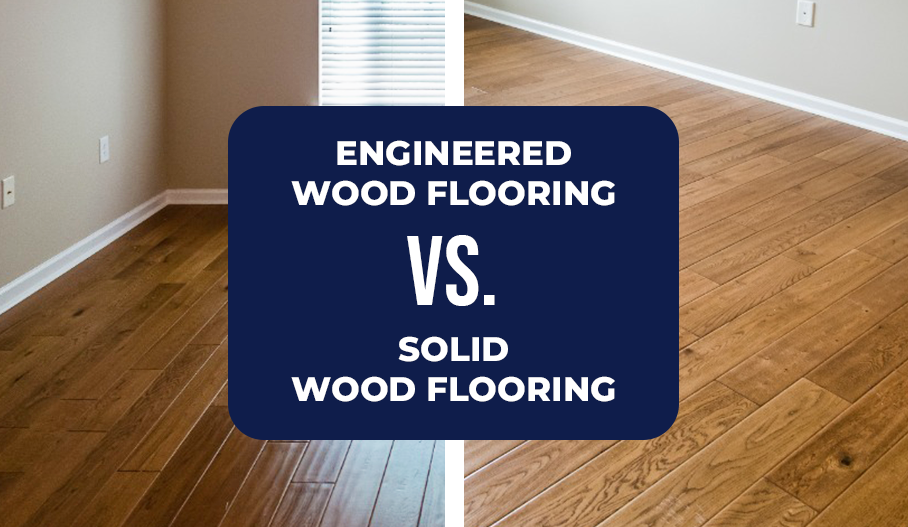When renovating or building a home, choosing the right type of flooring is a crucial decision. Homeowners, DIY enthusiasts, and interior designers are often torn between engineered wood and solid wood flooring. Both options offer distinct advantages and embody the warmth and natural beauty of wood, but how do they compare when it comes to the finer details?
Join us in this blog post as we delve into the details of engineered wood vs solid wood flooring and help you make an informed decision for your next flooring project.
Contents
- What is engineered wood flooring?
- What is solid wood flooring?
- Price comparison
- Stability comparison
- Durability comparison
- Utility comparison
- Sustainability comparison
- Installation comparison
- Maintenance comparison
- Aesthetics comparison
What is engineered wood flooring?
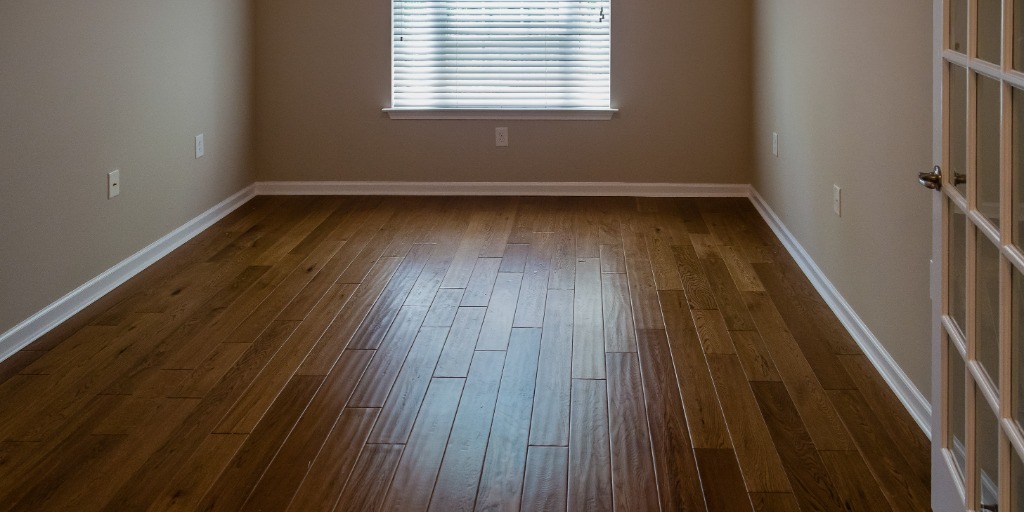
Engineered wood flooring (sometimes known as laminate flooring) consists of multiple layers of wood and plywood bonded together under heat and pressure, topped with a layer of hardwood veneer. This construction method gives engineered wood flooring several advantages over traditional solid wood. For instance, it tends to be more resistant to changes in humidity and temperature, reducing the likelihood of warping or buckling.
Popular examples of engineered wood flooring include oak, maple, and hickory, catering to a variety of aesthetic preferences while providing the look and feel of solid wood flooring without some of the inherent limitations.
What is solid wood flooring?
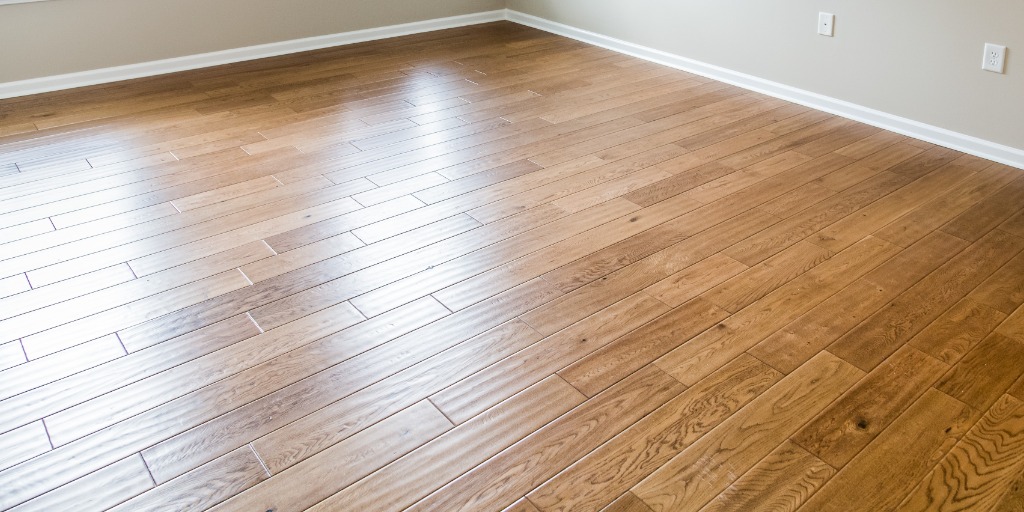
Solid hardwood flooring is exactly what its name suggests – each plank is made from a single piece of hardwood. Its history in building and decoration stretches back centuries, evoking a sense of timelessness and heritage. Found in many historical buildings across the globe, solid wood flooring is renowned for its durability and the ability to be sanded and refinished multiple times over its lifespan.
Common types of solid wood flooring include oak, walnut, and cherry, each offering a unique grain and colour that can add depth and character to any room.
Comparing solid wood and engineered wood floors
Price
When comparing the price of engineered flooring and solid wood flooring, several factors come into play, including the type of wood, the quality of the materials, and the cost of installation. Generally, an engineered wood floor tends to be less expensive than solid wood flooring, primarily due to the lower cost of the raw materials and the ease of installation. However, the price can vary significantly based on the specifics of the product.
Below is a table comparing the average price ranges for engineered wood and solid wood flooring.
It’s important to note that these prices are indicative and can fluctuate based on market conditions, specific brands, and retailer discounts.
| Flooring type | Average price per square metre |
| Engineered wood | £30 – £100 |
| Solid wood | £50 – £150 |
** Note that these prices can fluctuate based on supply, demand, and inflation. **
Additionally, the installation costs of hardwood floors is generally higher compared to most engineered wood floors. This is due to the need for more preparation and labour-intensive techniques to accommodate the expansion and contraction of solid wood. Solid wood also requires a subfloor that engineered wood does not, potentially adding to the cost.
It’s also important to consider the longevity and the potential for refinishing over time. While upfront costs for solid wood might be higher, its durability and the option for multiple refinishing can make it a more cost-effective choice in the long run.
Stability
In terms of thickness and length, engineered wooden flooring typically has a wider range of options. The top veneer layer can be similar in thickness to that of a solid wood floor’s wear layer, allowing for several sandings if necessary, but the overall plank might be thinner or longer due to the stability provided by its construction. Solid wood flooring comes in standard thicknesses and lengths, limited by the size of the raw lumber it is milled from.
Composition plays a significant role in the stability of engineered wood. The cross-layer construction counteracts the natural tendency of wood to move with changes in moisture. In contrast, the single-material composition of solid wood does not inherently counteract this movement, making it more prone to dimensional changes over time.
Durability
When assessing the durability of flooring options, it’s essential to consider how well the material withstands foot traffic, dents, scratches, and everyday wear and tear.
Engineered wood flooring, with its multiple layers of wood and plywood, offers considerable resistance to everyday use. The thickness of the top veneer layer on engineered wood can vary, influencing its durability and how many times it can be sanded and refinished. Typically, higher-quality engineered wood floors with thicker veneer layers can be refinished just like solid wood floors, extending their lifespan.
Check our Gallary
Solid wood flooring, known for its robustness, can last for decades when maintained properly. Its main advantage lies in its ability to be sanded down and refinished multiple times, potentially offering a lifetime of service. The durability of solid wood flooring heavily depends on the species of wood, with some woods being naturally harder and more resistant to wear than others. For instance, oak and maple are known for their hardness and are commonly used in high-traffic areas due to their longevity.
However, solid wood is more susceptible to moisture and can be damaged by water and excessive humidity, leading to warping or cracking over time. Conversely, engineered wood flooring, due to its construction, is less likely to be affected by moisture and temperature changes, making it a more suitable option in areas prone to such variations.
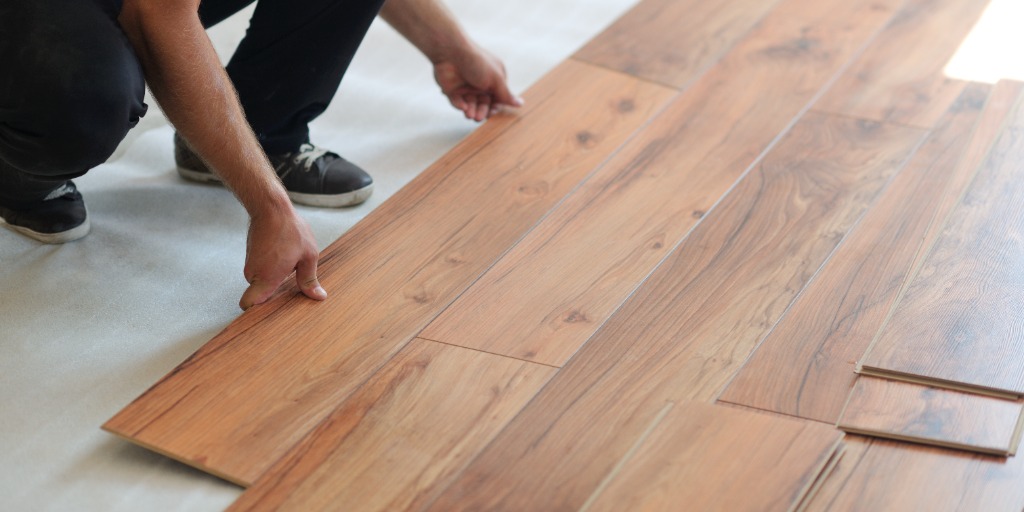
Both engineered and solid wood flooring have their places when considering durability. Engineered wood offers stability and resistance to environmental changes, making it ideal for below-grade installations like basements, where moisture levels might be problematic for solid wood. On the other hand, the timeless appeal and the capacity to endure decades of use make solid wood an appealing choice for areas where its natural beauty can be showcased and maintained.
Utility
The utility of flooring, whether engineered wood or solid wood, largely depends on the application, environmental conditions, and the aesthetic and functional needs of the space.
Engineered wood flooring often emerges as the more versatile of the two, being suitable for a wider range of installations including on top of underfloor heating systems, concrete slabs, and in basements. Its layered construction minimises expansion and contraction due to changes in humidity and temperature, reducing the risk of warping or cracking. This makes engineered wood an ideal choice for areas with higher moisture levels or greater temperature fluctuations, offering homeowners peace of mind regarding the longevity and stability of their flooring.
Contact Us for More Details
Solid wood flooring’s utility is most appreciated in environments where the stability of the climate can be controlled, and where its aesthetic virtues can be fully appreciated, such as living rooms, bedrooms, and dining areas. Despite its sensitivity to moisture and humidity, solid wood flooring’s ability to be sanded and refinished multiple times offers the unique advantage of renewing its surface, allowing it to recover from wear and adapt to new aesthetic preferences over time.
This capacity for rejuvenation enhances its utility in longstanding residences and heritage buildings, where preserving the character and quality of the interior is paramount.
Sustainability
When it comes to sustainability, both engineered and solid wood flooring have elements that appeal to environmentally conscious consumers, but they also face distinct challenges. Engineered wood flooring, which utilises a top layer of hardwood over multiple layers of plywood or recycled wood fibres, can be seen as a more resource-efficient option. This is because it often requires less of the actual hardwood species for the veneer, allowing for the conservation of more premium woods. Additionally, the base layers can incorporate recycled materials, which further reduces the environmental footprint.
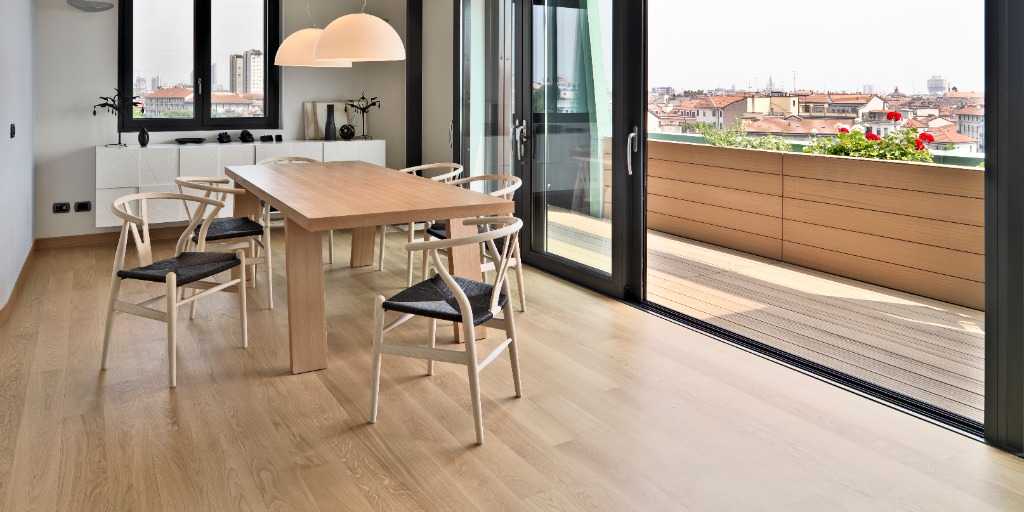
On the other hand, solid wood flooring is made entirely from hardwood, which means it uses more of the tree per plank compared to engineered wood. However, solid wood’s longevity must also be considered in its sustainability profile. Its ability to be sanded and refinished multiple times over many decades can make it a very sustainable option over the long term, as it might not need to be replaced as often as other flooring types.
Both types of flooring have the potential for sustainability, particularly if the wood is sourced from responsibly managed forests certified by organisations such as the Forest Stewardship Council (FSC) or the Programme for the Endorsement of Forest Certification (PEFC). The key difference lies in their initial environmental impact and how they are used and maintained over time.
While engineered wood might offer a more immediate reduction in resource use, solid wood’s durability and timeless appeal could mean less turnover and waste in the long run. Therefore, when considering the sustainability of wood flooring, one must weigh the initial environmental cost against the potential for longevity and renewal.
Installation
Installation is a pivotal factor that differentiates engineered wood flooring from solid wood flooring, primarily due to the inherent properties and construction of each type.
Engineered wood flooring is often lauded for its ease and versatility in installation methods. It can be installed using floating, glue-down, or nail-down techniques, depending on the subfloor and homeowner’s preference. The floating method, where planks are interlocked and laid over an underlayment without being attached to the subfloor, is particularly beneficial in reducing installation time and is suitable for DIY enthusiasts. The composition of engineered wood also allows for greater dimensional stability, making it ideal for environments with varying humidity levels, where solid wood might not be suitable.

On the other hand, solid wood flooring traditionally requires a more labour-intensive installation process, typically involving nailing down to a wooden subfloor. This method limits its applicability to certain types of substrates and often requires professional installation, increasing overall costs. Solid wood’s susceptibility to expansion and contraction with changes in humidity requires careful acclimatisation before installation, a step that is less critical with engineered wood.
As mentioned earlier, with the additional labour and considerations, you can expect to pay more for solid wood floor installation.
Maintenance
Engineered wood flooring boasts a relatively low-maintenance profile, benefiting from its resistance to changes in humidity and temperature. Regular sweeping or vacuuming to remove dust and debris, coupled with occasional mopping using a damp, not wet, mop, can keep engineered floors looking their best. It is less prone to warping or cracking, making it easier to maintain over time.
Solid wood flooring, while durable, demands more meticulous care to preserve its appearance and longevity. It requires regular sweeping or vacuuming and the use of specific wood cleaners to prevent damage to its surface. Solid wood floors are more susceptible to scratches and water damage, necessitating prompt clean-up of spills and possibly the use of rugs or mats in high-traffic areas to minimise wear.
Aesthetics
Engineered wood flooring provides a versatile aesthetic appeal due to its construction. The top layer, made of hardwood, displays the desired wood species’ grain and colour, allowing homeowners to choose from a wide range of looks. Modern manufacturing techniques have also enhanced the appearance of engineered wood, making it nearly indistinguishable from solid wood to the untrained eye. This wood type can be particularly appealing in contemporary settings where the stability of the product allows for wider planks and less spacing between boards, offering a sleek and uninterrupted visual flow.
In contrast, solid wood flooring is valued for its timeless and authentic beauty. The depth, warmth, and unique character of a solid wood floor are often seen as unmatched, with each plank telling a story through its natural variations, knots, and grain patterns. Solid wood tends to age gracefully, acquiring a patina that many find appealing. Its ability to be sanded and refinished allows homeowners to restore its original lustre or update its finish to match evolving interior trends, which can add to the aesthetic value of a space over time.
Conclusion
When it comes to choosing between engineered and solid wood flooring, the decision ultimately hinges on a combination of factors including sustainability, installation requirements, maintenance, and aesthetic preferences. Each type of flooring offers its own unique set of benefits, catering to different needs and lifestyles.
Engineered wood stands out for its versatility, ease of installation, and suitability for a wider range of environments, making it an excellent choice for modern homes.
Solid wood, on the other hand, delights with its timeless beauty, durability, and the ability to rejuvenate its surface, offering a potentially lifelong flooring solution.
Both options, when sourced responsibly, can provide a sustainable flooring solution that adds warmth and character to any space. Consider your specific living environment, personal style, and long-term plans for your home when making your choice. Ultimately, whether you choose the engineered innovation or the solid tradition, selecting wood flooring is an investment in the beauty and comfort of your home.
Still can’t decide? Speak to the experts!
At LT Flooring, our commitment is to provide you with all the necessary information to make an informed decision that suits your space, style, and budget.
Our friendly team of flooring experts is always available to answer any questions and guide you through the selection process, so reach out today to get started.

